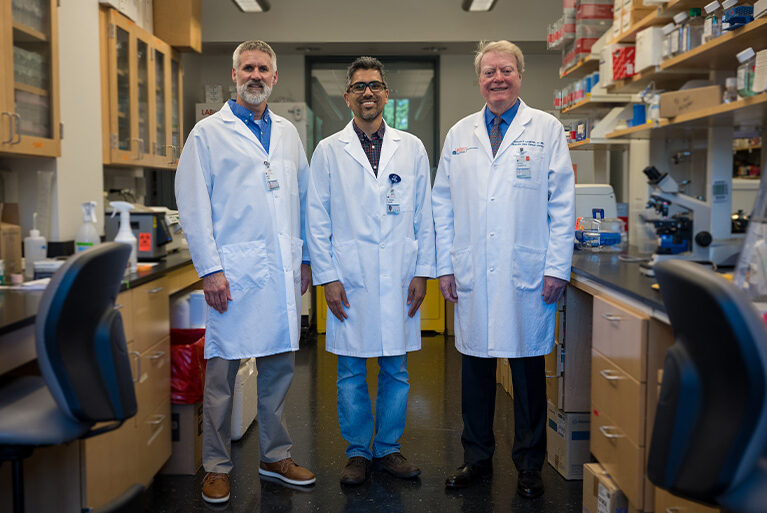
UVA Cancer Center researchers recently led a multidisciplinary, multicenter study that identified a way to further classify patients with acute myeloid leukemia (AML) — opening the door for the development of more tailored treatments and improved patient outcomes.
Thomas Loughran, MD, director of UVA Cancer Center and one of the study’s principal investigators — along with researchers in the UVA Department of Biomedical Engineering and the School of Medicine’s Department of Biochemistry and Molecular Genetics — found they could measure sphingolipid molecules in cancer cells to better predict how patients would respond to treatment.
“Acute myeloid leukemia is, unfortunately, a devastating illness, particularly for people over age 60,” Loughran says. “And right now, it can be kind of fuzzy on whether a certain patient is at risk of poor outcomes. This new way we found of classifying AML has implications for what kind of treatment you might deliver to that patient.”
Lipids Show Promise for Blood Cancer Treatment
Until now, doctors have used genomic and chromosomal biomarkers in AML to determine how a patient will respond to treatment. Yet even with this profiling, they couldn’t reasonably predict which patients would benefit from standard treatments, Loughran says.
The study’s researchers set out to determine if they could stratify a patient’s classification more accurately by analyzing sphingolipids, which they believe play a critical role in both the development of AML and its ability to resist treatment. They found that by measuring these lipids, they could classify AML into two subtypes: a high-risk subtype and a low-risk subtype, with the high-risk subtype patients bearing twice the risk of treatment failure.
Measuring lipids is more difficult than measuring genes, Loughran says, but the treatment implications are vast.
Instead of giving patients in the high-risk subtype an intensive chemotherapy regimen that’s unlikely to work against their AML, for instance, doctors could enroll them in clinical trials of new treatments that target their specific lipid biomarker.
“It’s an exciting phase of studying how lipids affect blood cancers,” Loughran says.
Altering Sphingolipids Could Improve Patient Treatment Response
The researchers published their findings in the scientific journal Blood Advances. The project was supported by the National Institutes of Health and its National Cancer Institute, as well as the UVA Robert R. Wagner Fellowship and the Edward P. Evans Foundation grants. Participating institutions included UVA Health, Eastern Carolina University, Pennsylvania State University, and Memorial Sloan Kettering Cancer Center.
Loughran says next steps include more research to confirm the findings, as well as receiving FDA approval for AML clinical trials currently underway that incorporate nanotechnology delivery of ceramide into standard treatment approaches.
“We’ll be studying the clinical responses in the lab and trying to correlate any new biomarkers that we identify are helpful at improving therapy for patients with AML,” he says.
Loughran also hopes that researchers will eventually be able to develop ways to alter the sphingolipids in high-risk patients to become more like the low-risk subtype. This could make the cancer more responsive to treatment and improve outcomes for AML patients.